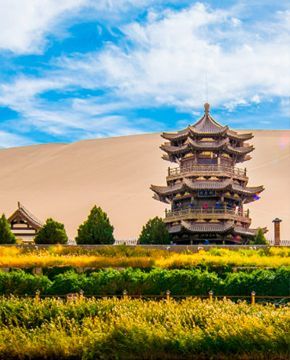For the vast majority of people, the natural scenery of northern Xinjiang is deeply rooted among the people. However, these scenic spots are only part of the scenery of Xinjiang, while South Xinjiang is a perfect combination of nature and humanity. Southern Xinjiang refers to the south of Tianshan Mountain in Xinjiang, including Tarim Basin, Kunlun Mountains and Turpan Basin, Southern Xinjiang has been a multi-ethnic area since ancient times, the arts and customs of Uyghur and Tajik nationalities are colourful, forming a humanistic landscape with strong national characteristics. Hundreds of ancient city pools, ancient tombs, thousand Buddha caves and other monuments left on the southern and central trunk lines of the ancient Silk Road show the long history and vicissitudes of life.
Aksu lies in the west of Xinjiang, on the western brim of Tarim Basin and the southern foot of the Tianshan Mountain, every May to October is the best time to travel in Aksu. Aksu is a temperate continental climate and it is one of the regions with more solar radiations in China. It has abundant solar and thermal resources, large temperature difference between day and night, the annual average temperature is 9.9 to 11.5 Degree Celsius, and annual precipitation is 42.4 to 94.4 mm, and It has the Climate Characteristics of dry and cold winter and dry and hot summer.
In summer, with intense light and ultraviolet radiation, even if you wear sunscreen, you'll get a tan. When you travel in winter, Aksu's snowscape will surprise you, however the dry and cold weather is not generally adaptable.
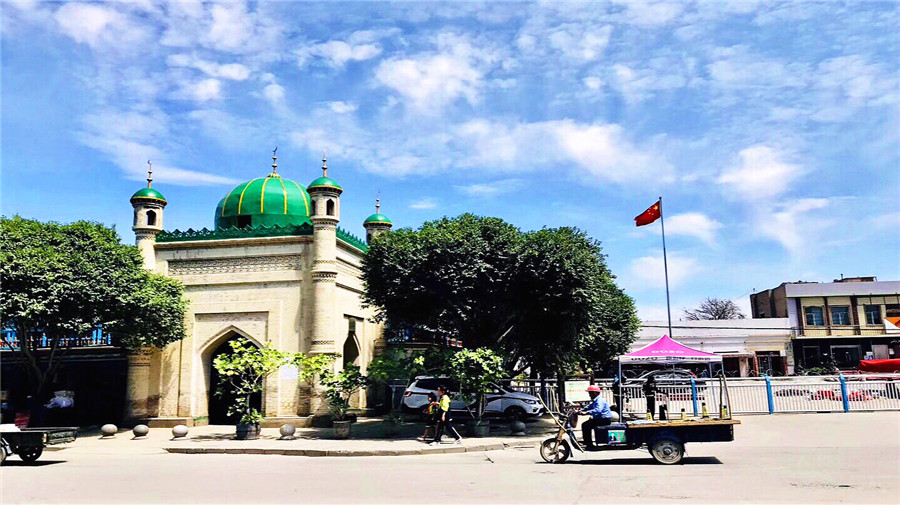
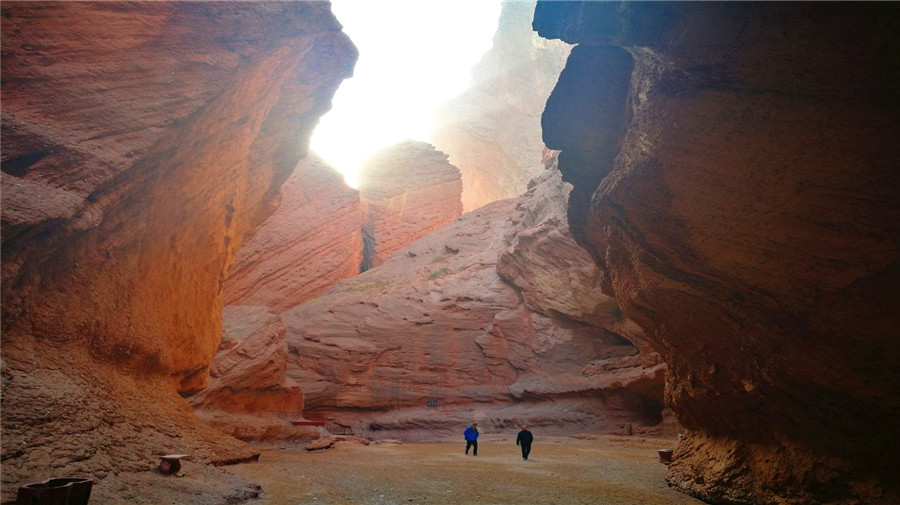
Kuqa formerly known as Qiuci, it was an ancient Buddhist kingdom located on the Branch of the Silk Road that ran along northern edge of the Taklamakan Desert in the Tarim Basin and south of Muzat River. The area lies in the present day Aksu Prefecture, Xinjiang, China.
From June to October are the best time to travel to Kuqa. Kuqa County is situated in the warm zone, dry climate, less precipitation, hot summer, dry and cold in winter, annual temperature and sunshine is different, so it belongs to the warm zone continental arid climate. Due to the complexity of the landform, there are obvious regional climate differences.
Kuqa Grand Canyon is composed of reddish-brown mountain groups, natives call it ‘Kizilia'. The canyon runs north to south, it total length of more than 5,000 metres. Is a rare natural wonder in China, which is formed by wind and rain erosion plus torrential flood erosion.
Every June to October is the best time to travel to Kasgar, at this time, the climate is mild, fragrance of melons and fruits, which is quit suitable for sightseeing and vacation. Karakule Lake is also the most beautiful lake in this season, suitable for hiking.
Karakul lake is locating in the Pamir Plateau, is one of the top 10 largest meteorite pools in the world and an attractive destination for Xinjiang tourism, the lake is famous for its fanciful landscape and clear waters
Khunjerab Pass is the highest port in the world, where there is a boundary marker of China. Because of the bad weather, it is only open from May to October every year.In addition, during the two major Islamic festivals, Eid al-Fitr and the Corban Festival (10 December), there will be a grand pilgrimage at the Idkah Mosque, when thousands of Muslims will gather in the square outside the mosque to worship and hold a series of celebrations.Every August to Mid-October are the best time to visit Korla. Korla is a temperate continental arid climate, the annual average temperature is about 11 degree Celsius, in winter temperature is between -10 to -7.9 degrees Celsius, in summer, the average temperature is 26 degrees Celsius. Generally speaking, the climate in southern Xinjiang is relatively moderate.
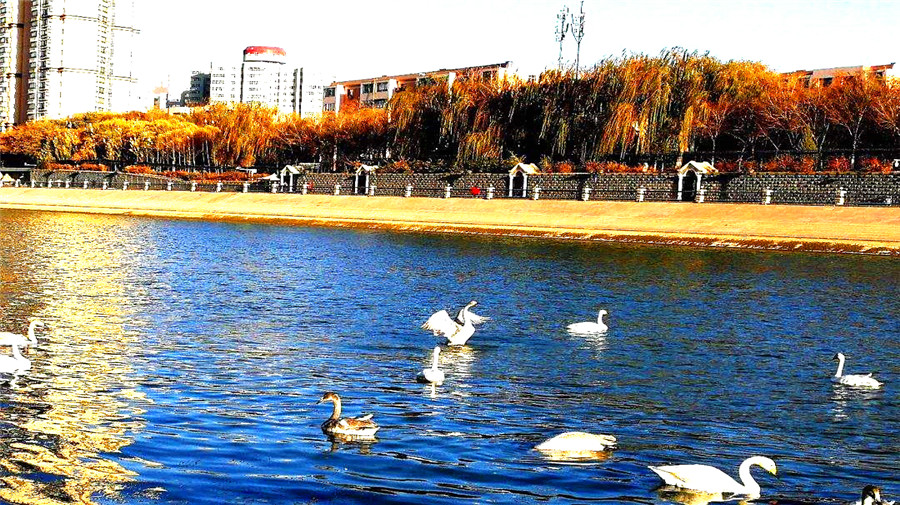
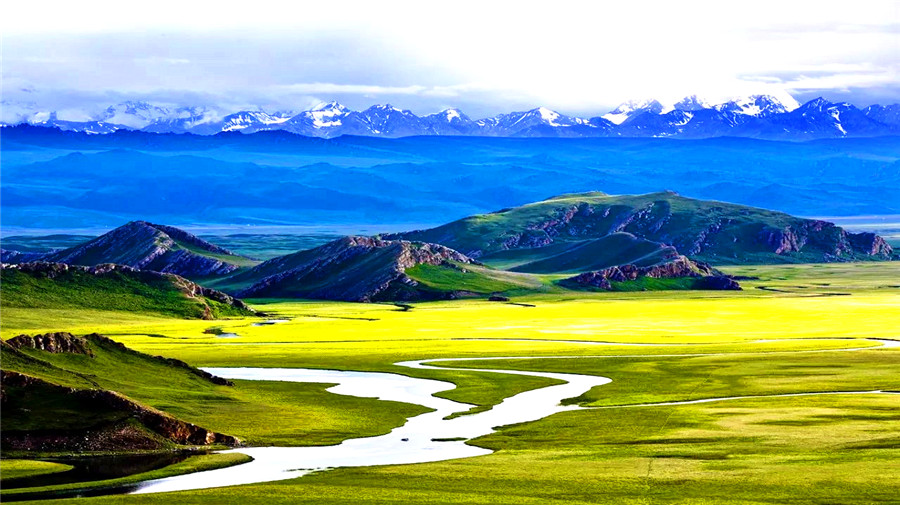
Autumn is the ripening season of melons and fruits, in every August and September, there will be a "Korla Bergamot Pear Festival", which is the best time to visit Korla. while if you would like to enjoy the swans in Swan Lake and the traditional activities of Xinjiang Minorities in Bayinbuluk Grassland, you'd better come to Korla in April and July. Every year around April, the swans, gooses and other rare birds will fly back from the south to multiply and thrive. In the sunlight, swans, lakes, mountains, clouds and shadows merge into a very spectacular scene, Bird-watching terraces are built for visitors to climb and watch birds.Every year around April, the swans, gooses and other rare birds will fly back from the south to multiply and thrive. In the sunlight, swans, lakes, mountains, clouds and shadows merge into a very spectacular scene, Bird-watching terraces are built for visitors to climb and watch birds.
Every July, the annual Nadam Fair will hold in Bayinbuluk. Thousands of people will gather here to hold the different activities such as singing and dancing, wrestling, horse racing and archery etc.

